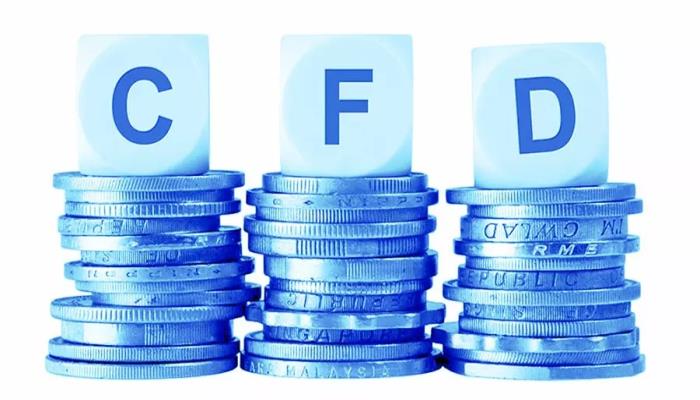Riding the Waves: A Beginner’s Guide to CFD Trading Online

Contracts for Difference (CFD) trading is a method that allows individuals to speculate on rising or falling prices of fast-moving global financial markets. This form of trading involves exchanging the difference in the cost of a financial instrument between when the contract is opened and when it is closed. It allows traders to profit from price movements without owning the underlying assets. This versatility makes trading CFD online appealing to traders looking for flexibility and diversification in their investment strategies.
Understanding the Basics
At the heart of trading CFD online lies the principle of leverage, enabling traders to control substantial positions with a fraction of the total trade value as margin. This financial leverage magnifies both potential profits and losses, creating a scenario where market movements have a pronounced effect on the trading account balance. Consequently, the implementation of robust risk management strategies becomes not just beneficial but essential for safeguarding investments. These strategies include setting stop-loss orders to minimise losses, utilising position sizing to manage exposure, and regularly monitoring market conditions to adjust strategies as necessary. Understanding the implications of leverage and employing disciplined risk management practices are fundamental steps for anyone looking to navigate the volatile waters of CFD trading successfully.
Choosing the Right Platform
Selecting an appropriate trading platform is crucial for success in the online CFD market. Prospective traders should prioritise platforms that offer a user-friendly interface, ensuring ease of navigation and efficient trade execution. Comprehensive analytical tools and access to real-time market data are essential for making informed decisions based on current market trends. Additionally, the importance of robust security features cannot be overstated, as they safeguard traders’ personal and financial information. Regulatory compliance is another critical factor, as it provides a layer of protection for traders, ensuring that the platform operates within legal boundaries and adheres to industry standards. Together, these elements form the foundation of a reliable trading environment, empowering traders to focus on their trading strategies with confidence.
Developing a Trading Strategy
Success in CFD trading comes not from random luck but through meticulous planning and strategy. Traders should start by defining their investment goals, risk tolerance, and time horizon. Common strategies include day trading, swing trading, and scalping, each with a unique market movement approach. Utilising technical and fundamental analysis can also provide traders with insights into the market trends and potential entry and exit points.
Risk Management Techniques
Effective risk management is the cornerstone of successful CFD trading. Tools such as stop-loss orders can limit potential losses by automatically closing positions at a predetermined price. Diversification, another crucial strategy, involves spreading investments across various financial instruments to reduce exposure to any single asset. Setting realistic profit targets and closely monitoring market conditions can further mitigate risks.
The Importance of Continuous Learning
The financial markets are constantly evolving, necessitating a commitment to continuous learning and adaptation. New traders should take advantage of the educational resources, demo accounts, and trading simulations many platforms offer. These resources can provide valuable experience without the risk of actual capital. Keeping abreast of global economic events and understanding their potential impact on markets is essential for making informed trading decisions.
Common Pitfalls to Avoid
Emotions often cloud judgement, leading traders to deviate from their strategic plans. Overconfidence may prompt excessive leveraging or holding onto losing positions in the hope of a turnaround, compounding losses. Conversely, fear can trigger the sale of assets at the first sign of a downturn, forsaking potential gains. Additionally, neglecting to stay informed about market news and trends can result in ill-timed trades or overlooked opportunities. Succumbing to the allure of quick wins over disciplined analysis and failing to assess the long-term implications of market movements further exacerbate the risks. Thus, maintaining emotional discipline and staying informed are paramount for navigating the volatile waters of trading effectively.
The Role of Professional Advice
While the internet offers a wealth of information, the value of consulting with financial advisors or seasoned traders cannot be overstated. These professionals provide personalised insights and guidance, aligning advice with individual investment objectives. In the intricate world of trading, where market conditions and financial instruments are in constant flux, professional advice becomes invaluable. It assists in navigating complex situations, mitigating risks, and uncovering opportunities that may not be immediately apparent to the untrained eye. Moreover, developing sophisticated trading strategies under the mentorship of experienced traders can significantly enhance one’s trading acumen, leading to more informed decision-making and potentially higher returns. This tailored approach ensures that strategies are not only theoretically sound but also practically viable, taking into account market realities and individual risk tolerances.
Conclusion
CFD trading online offers a pathway to potentially profitable investment opportunities but requires careful planning, strategy, and risk management. By understanding the basics, choosing the right platform, developing a sound trading strategy, and committing to ongoing education, traders can navigate the complexities of the CFD market. Remember, success in CFD trading comes from informed decisions, disciplined risk management, and the ability to adapt to the ever-changing financial landscape.


